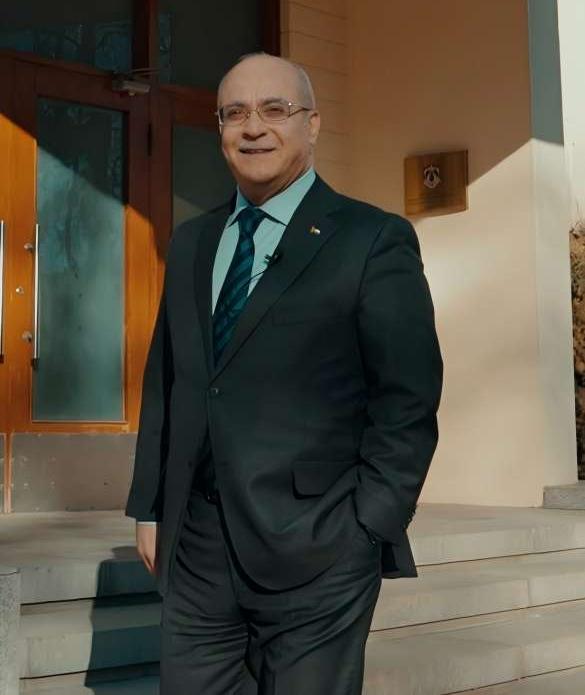Keywords of Beijing 2023 (Part 3)
Editor's note: In order to help the international community and foreign institutions as well as foreigners in Beijing better understand the city, and facilitate the functions of the international exchange center and Beijing's high-quality development, the Translation Center of the Foreign Affairs Office of the People's Government of Beijing Municipality has partnered with the China Academy for Public Policy Translation of Beijing International Studies University to launch "Keywords of Beijing". This initiative selects and translates 38 annual policy hot words from the Report on the Work of the Government into formal English translations.
15、四个密度
Four densities
即人口密度、建筑密度、商业密度、旅游密度。降低核心区“四个密度”是首都功能核心区控制性详细规划所提出的优化核心区功能的重要任务。
They refer to population density, building density, business density and density of tourist activities. Reducing these "four densities" is a major task for improving functions of the capital's core zone, as outlined in the Development Control Plan for the Core Zone Serving Capital Functions.
16、三区三线
Three zones delineated by three lines for land use
三区即农业空间、生态空间、城镇空间三种类型的国土空间。三线即分别对应在农业空间、生态空间、城镇空间划定的耕地和永久基本农田保护红线、生态保护红线、城镇开发边界三条控制线。
This is a concept used in China to delineate the boundaries that define three distinct types of land use. The three zones are agricultural zones, ecological preservation zones, and urban development zones, while the three lines are the red line for protection of farmland and permanent basic cropland, the red line for ecological conservation, and the boundary line for urban development.
17、“吹哨报到”
Quick response to community calls
即“街乡吹哨、部门报到”改革,是党建引领基层治理的一项体制机制创新,是在总结平谷区探索实践的基础上,聚焦办好群众家门口事,树立到一线解决问题的导向,通过切实赋予街道乡镇更多自主权,推动重心下移、力量下沉,建立基层治理的应急机制、服务群众的响应机制、打通抓落实“最后一公里”的工作机制。
This is an innovative institutional reform in Party-led governance at the primary level, whereby competent government departments respond to requests from sub-district/township offices to address pressing local issues. This approach is based on the successful practices of Pinggu District, with a view to ensuring that problems that occur at people's doorsteps are properly addressed. It focuses on solving problems locally, bringing more government resources and manpower to the sub-district and community levels to meet people's needs. By providing timely responses to emergencies and local requests, this mechanism helps close the "last mile" gap in government service delivery.
18、四个服务
Four services
即为中央党、政、军领导机关的工作服务,为国家的国际交往服务,为科技和教育发展服务,为改善人民群众生活服务,是中央对首都工作的基本要求,也是做好首都工作的根本职责所在。
They refer to four fundamental duties of Beijing as the capital, that is to support departments and institutions of the CPC central committee, the central government and central military commission, to facilitate international exchanges at the national level, to advance the development of science, technology and education, and to improve people's lives. These reflect the basic requirements of the central authorities for the capital city.
19、每月一题
Theme of the month
即接诉即办“每月一题”机制,2021年起,北京市从上年度12345热线市民诉求中筛选出基层和市民普遍反映突出、长期解决不好、适合在市级层面制定新政策统筹解决的问题,采取高位推动、每月调度、重点督办的方式,每月围绕1个主题、选取2-3个具体问题,每个问题由一位分管市领导统筹、一个部门牵头负主责,相关单位协同配合,积极推动问题解决,提升群众的获得感。
This is a mechanism for addressing public concerns in a timely manner. Starting from 2021, the city has been identifying thorny and chronic issues, based on records of the previous year's 12345 hotline calls, that require policy interventions at the municipal level. This mechanism involves commitment by the city's top leadership, monthly consultations, and progress monitoring for key matters. Each month, two to three specific issues centering on one particular theme are addressed. For each issue, a lead department is to take charge under the guidance of one municipal leader and with collaboration from other relevant departments to solve the issue and improve public satisfaction.
20、三城一区
Three science cities and one demonstration area
即中关村科学城、怀柔科学城、未来科学城和创新型产业集群示范区,是北京市建设国际科技创新中心的主平台。“三城一区”集聚了全市6成左右的研发人员和研发费用,以不足6%的土地面积贡献了全市三分之一的地区生产总值。
They refer to Zhongguancun Science City, Huairou Science City, Beijing Future Science Park and the Demonstration Area for Innovation-based Industrial Clusters. They serve as pivotal platforms for building Beijing into an international innovation center. Together, they house about 60% of the city's R&D personnel, and account for almost 60% of Beijing's R&D spending. Despite occupying less than 6% of the city's land area, they contribute to one-third of the city's GRP.
21、韧性城市
A resilient city
即具备在逆变环境中承受、适应和快速恢复能力的城市,是城市安全发展的新范式。主要指城市在面临自然和社会压力冲击,特别是遭受重大安全事故、极端天气、地震、洪涝、重大疫情等突发事件时,能够凭借其动态平衡、冗余缓冲和自我修复等特性,保持抗压、存续、适应和可持续发展的能力。国家“十四五”规划提出建设韧性城市,北京市于2021年印发《关于加快推进韧性城市建设的指导意见》,围绕城市空间韧性、工程韧性、管理韧性和社会韧性,从城市规划、建设、管理全过程和各方面,为推进北京市韧性城市建设进行了顶层设计。
This represents a new paradigm for safety development of cities, which refers to a city's ability to withstand, adapt to and recover quickly from an adverse or changing environment.
A resilient city is one that has built up a cushion against unexpected shocks, such as natural disasters and societal problems, in particular, major safety accidents, extreme weather, earthquakes, floods, major epidemics and other emergencies. A resilient city can reorient itself depending on the circumstances to deal with the pressure, adapt, survive, and quickly return to the path of sustainable development.
The 14th Five-Year Plan proposes to foster resilient cities. In 2021, Beijing issued the Guidelines on Accelerating the Building of a Resilient City, laying down a master plan for building up the city's resilience in areas including urban space planning, construction, urban management and society, so that resilience is integrated throughout the whole process of planning, development and management.
22、城市更新
Urban renewal
即对城市建成区城市空间形态和城市功能的持续完善和优化调整,严控大拆大建,严守安全底线,严格生态保护,是小规模、渐进式、可持续的更新。北京市城市更新主要聚焦以下几个方面:服务“四个中心”建设优化提升首都功能;城市公共空间、公共服务设施、市政交通等基础设施系统完善;居民住房条件、小区环境及配套设施优化改善;低效楼宇转型升级;历史文化街区保护利用;产业园区和老旧厂房改造更新等。
This refers to continuous efforts to improve and adjust the city's spatial organization and urban functions in the developed areas. Beijing will strictly control large-scale demolition and construction, implement strict safety standards, and rigorously protect the ecosystem. This renewal is small-scale, incremental and sustainable.
Beijing's urban renewal focuses on the following: strengthening Beijing's position as "the four centers" and the capital of the nation; improving infrastructure such as urban public spaces, public service facilities and public transportation; optimizing residential housing conditions as well as the environs and supporting facilities of residential communities; upgrading under- or mis-utilized buildings; protecting and utilizing historical and cultural areas; and transforming and renovating industrial parks and old industrial buildings.



